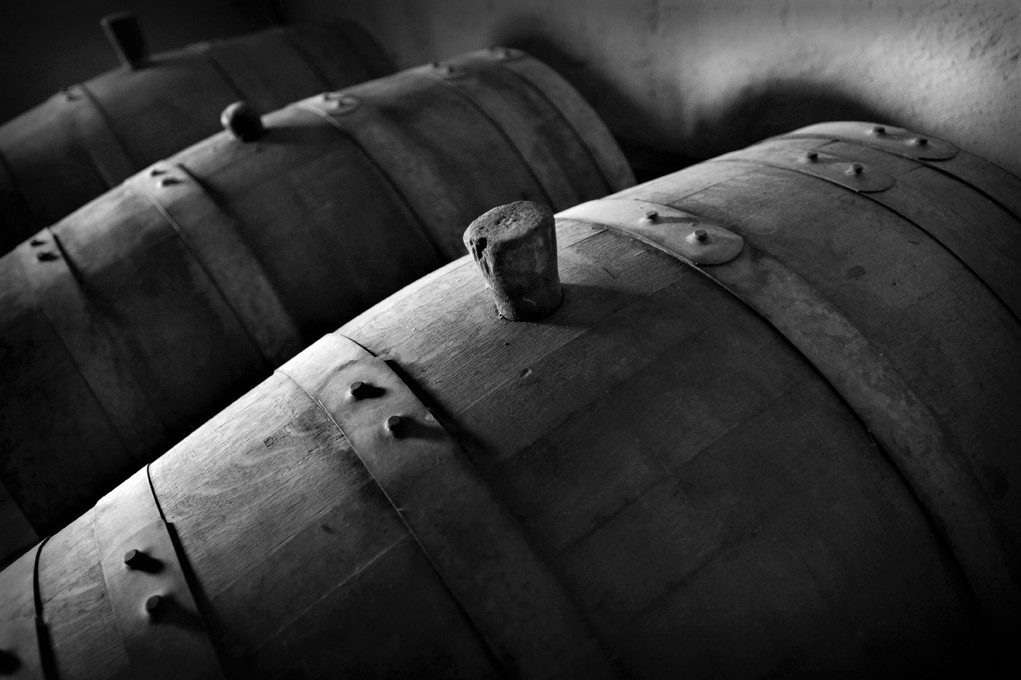
About us

The story of the Kay family can be traced back to 1724 in Scotland where their ancestor James Keye was born in Arbroath. It is thought that one of the original bearers of the name was a maker of keys, or someone who held the ceremonial office of a key bearer. The Kay family crest, featured on the coat of arms for Scottish branches of the Kay family is a Griffin’s head, a fitting symbol for Kay Brothers wines.
In 1850, William Kay, James Keye’s great grandson, arrived in the new colony of Adelaide, aboard the migrant ship Sea Queen. He had grown up in Newcastle-upon-Tyne in northern England and was just 20 years old. In 1853, he married Sarah Catcheside, a talented botanical artist, family friend and fellow migrant from Newcastle-upon-Tyne. Together they had 11 children, 3 of whom died very young. Of the eight surviving there were four boys and four girls. The two youngest children were brothers Herbert and Frederick Kay, founders of Kay Brothers Wines.
After the premature death of their father, ‘Bert’ & ‘Fred’ set out to find an industry of their own, settling on an agricultural property in McLaren Vale originally established by a settler called Richard Aldersey, who named the property Amery for the farm where he grew up in Hampshire, England. As only Bert was of age, the property was purchased in his name only, until 1891 when Bert transferred half the ownership to his brother Fred.
Bert and Fred began living at Amery in 1891 a few months after the property was purchased. Neither had farming backgrounds, but they did have some early experience in business and a lot of determination. They also had the support of two unmarried sisters, Rose and Kate, who managed the homestead.
Within seven years of their arrival Bert and Fred had planted 103 acres of vines. Their first vintage in 1895 yielded 2,000 gallons (9,000 litres) mostly a dry red blend destined for export to Britain. During the 1890s they also built the first part of the winery consisting of a crusher, fermenting tanks, press and storage tanks, most of which still stands today. It was designed with the assistance of local winemaker John G Kelly, son of Alexander Kelly, who established the Tintara vineyard, a neighbour to the Kay’s Amery vineyard.
By 1910 Kays had 35 acres in production. Export to Britain of dry red blends, mostly made from Grenache, Mataro and Shiraz, steadily grew. In 1906 they started buying grapes to increase production. In 1913 Bert married Marjorie Hayward, daughter of the family doctor, and the following year Marjorie gave birth to her first son Cuthbert ‘Cud’, destined to become the second-generation winemaker.
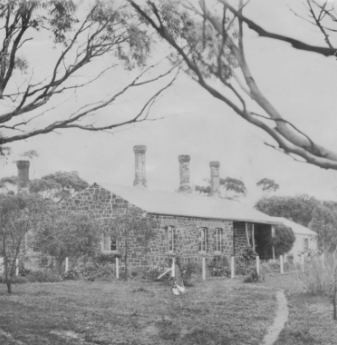

After the difficult years around WWI, in the early 1920s Bert and Fred made several more extensions to the cellars doubling storage capacity of the winery to 205,000 gallons. They also installed a variety of new equipment to make wine production more efficient. The new Celestin Coq and Compagnie hydraulic basket press was installed and ready for the 1928 vintage, and is still going strong nearly 100 years later. There was a brief period in the early 1930s when over 70% of production was sweet fortified red, however by the second half of the 40s bulk dry red again made up more than 80% production again.
WWII had a significant impact on the Australian wine industry and this was felt at Kays. Cud, who had taken over the principal role of winemaker and lived at Amery with wife Barb, joined the Army in 1942. Bert and Fred now in their 70s returned from retirement. Labour shortages and a near total embargo on wine imports from Australia were a constant frustration. Towards the end of the 1940s the winery was just returning to normality after the war when tragedy struck. Fred died in 1947 after a dreadful accident. The following year Bert passed away after falling ill. The brothers had been in partnership for 57 years, a record unequalled in Australian winemaking history.
The 1950s were a time of change: tractors replaced horses, mains electricity was connected, and Cud Kay started to make more whites and different types of reds. He also planted new vineyards, more Shiraz and Riesling, Palomino and Pedro. By the middle of the decade Cud began selling half gallon barrel flagons at cellar door. As local trade picked up and the drinking public became more discerning, he made more varietal wines in place of the generic blends. He also commissioned a new range of wine labels incorporating the Griffin’s head crest.
When Cud’s son Colin gradually took over winemaking in the 1970s he further refined and enlarged the range of varietals. Colin also increased the operational capacity of the winery. He planted more vineyards, purchased a variety of modern equipment including a crusher, two large capacity stainless steel storage tanks, a bottling machine and built a modern warehouse for the storing and handling packaged wine. Colin also concentrated more on making premium varietal wines, including the first vintage of the Block 6 Shiraz in 1985.
In 1991 the company turned 100 years old. Two years later, in 1993 all the buildings were listed on the South Australian Heritage register. During the 90s Colin steadily enlarged the remaining vineyard and began irrigating using dripper nozzles on permanent lightweight polycarbonate pipelines and water from bores on the property. New blocks were trellised and had straight rows allowing mechanical pruning and harvesting and a new laboratory was built. Wine styles were further refined with a varietal Mataro and Merlot added to the range.
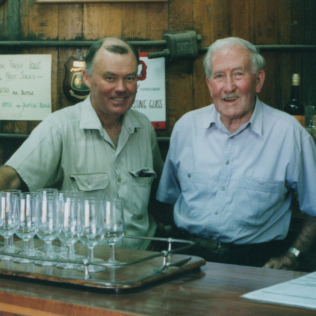
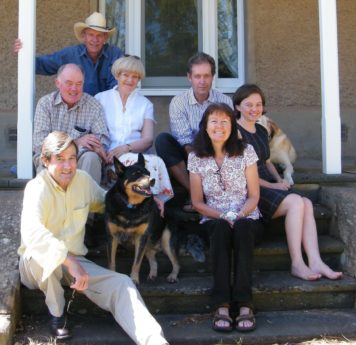
In 2001, Cud Kay passed away. He had devoted his entire professional life to Kay Brothers and had remained active around Amery into his 80s. His charm, decency and conversational skill are missed by all, and his legacy is honoured by the Cuthbert Cabernet Sauvignon, his favourite variety.
By the beginning of the 21st century, Stelvin caps replaced corks, overseas trade of bottled wine expanded, the Basket Press varietal range was established alongside two of our icon wines,, the Cuthbert Cabernet and Hillside Shiraz. Stainless steel inserts were placed in the traditional open fermenters built by Bert and Fred and recycled water replaced bore irrigation.
In 2014 Colin Kay retired from day-to-day duties. Today, his daughter Elspeth continues the family tradition alongside general manager and chief winemaker Duncan Kennedy.
DIARY
Since the very first day of their arrival at Amery, beginning with Bert & Fred, the Kay family have kept an almost daily diary:
“Entered into possession at Amery.
Sections 514, 515, 516 & 740.
Rose, Bert, and Fred arrived about 6.30
Stock – Brown Horse “Darkie”, Roan Horse “Roanie”
4 swarms of bees, 6 hens
Furniture per M. Webers wagon 9.45″
That is over 130 years of daily entries, and whilst it is mostly simple notations of what happened each day, it is an impressive record of the history of the family and Kay Brothers wine business.
The diaries are just one of many detailed records kept by the family, alongside daily rainfall figures, handwritten letters, ledgers and notebooks, that provide invaluable knowledge and understanding of the Amery vineyard over its lifespan.
Continued today by Elspeth Kay, the diary will give the next generation of Kay family members valuable background information to inform decisions well into the future.
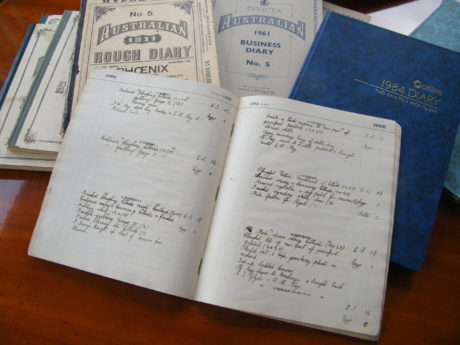
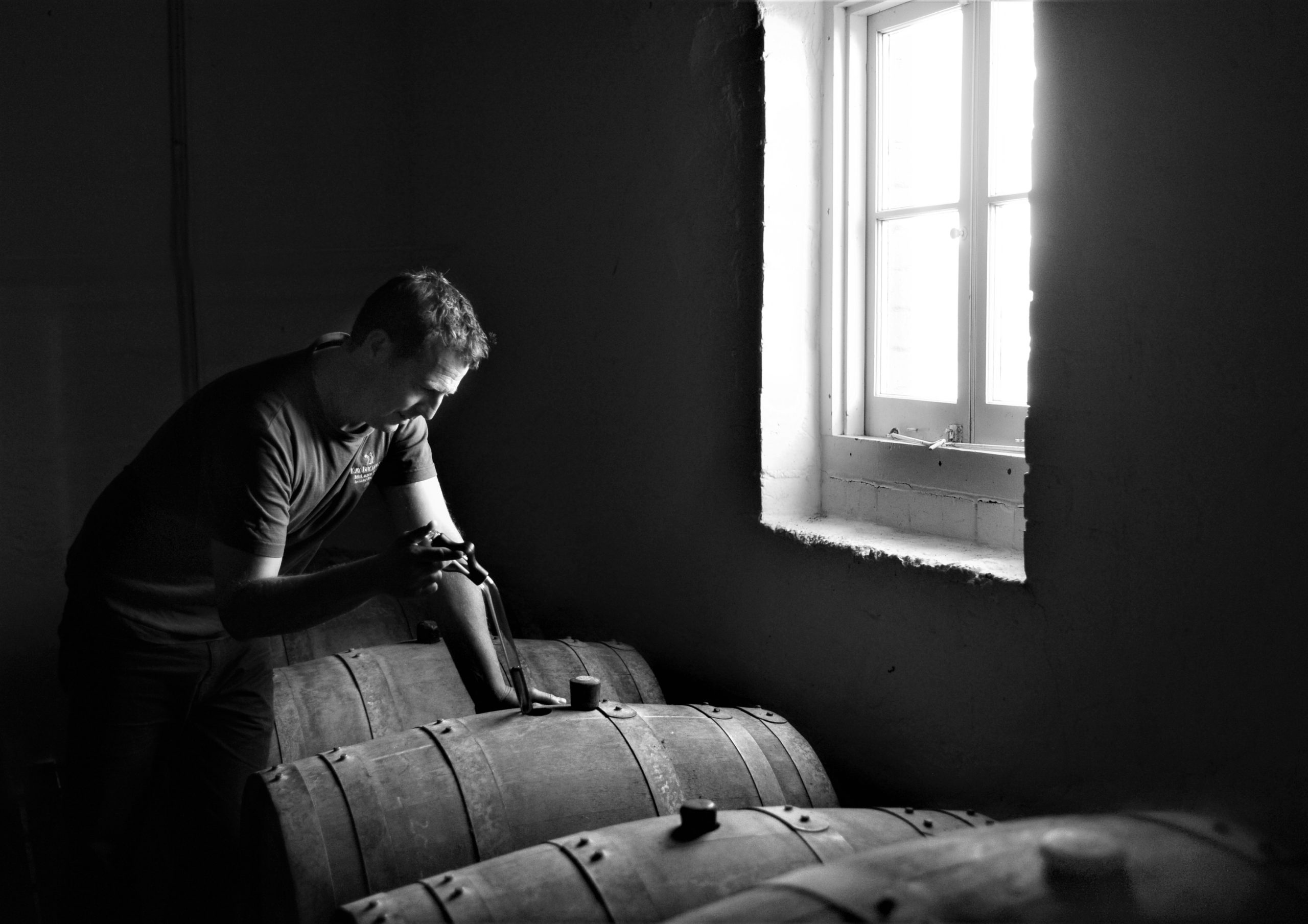
Our methods may be old fashioned, but at Kay Brothers we are proud to make McLaren Vale wines that truly express their terroir. The aim in the winery is to do whatever we can to preserve the amazing flavours and characters nature provides in the vineyard. To achieve this, we strive to be as gentle as possible from harvest all the way through to the original open fermenters, hand plunging and our heritage 1928 basket press.
Small batches are handled individually, maximising the unique characters that stem from each vine. Wines are then transferred to large oak formats to optimise oak integration, creating balanced oak influence. These barrels are then stored in the cool, stone walled cellars, in a stable climate, allowing the wines to mature gracefully. The resulting wines exhibit the balance we so carefully work towards, approachable wines with great aging ability, soft tannins, fruit quality and intensity of flavour.
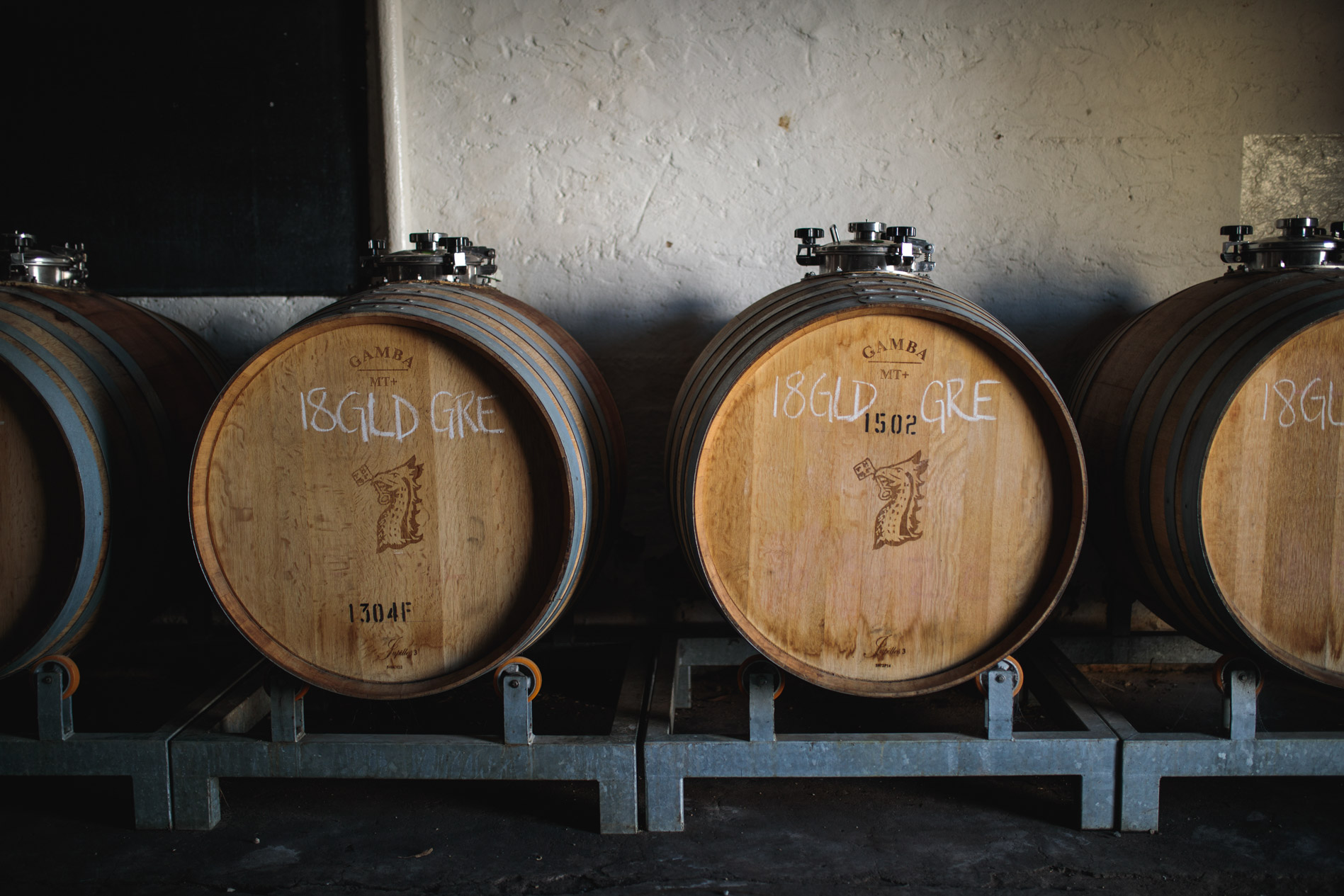

BASKET PRESS
At Kay Brothers we utilise a traditional method of pressing our wines. Our Celestin Coq & Compagnie Basket Press was installed and ready for use in the 1928 vintage. The basket press reflects our traditional winemaking philosophy. The grapes are pressed gently, resulting in softer tannins and cleaner juice. Whilst this process is labour intensive and time consuming, we are confident it translates to superior quality.
Utilising a hydraulic ram, the basket and trolley are raised up so grape pulp and skins are gently pressed against the static top plate. This pressure forces the juice to run out through the wooden slats in the basket. The wine collects in the pan on the trolley and is run through a sieve before being pumped off to tank to settle. The resulting pressed cake of grape skins is removed, broken up and may be pressed a further two times depending on the season and quality of the grape material. The winemaker’s skill comes to the fore in the treatment and handling of the wine that result from each pressing stage.
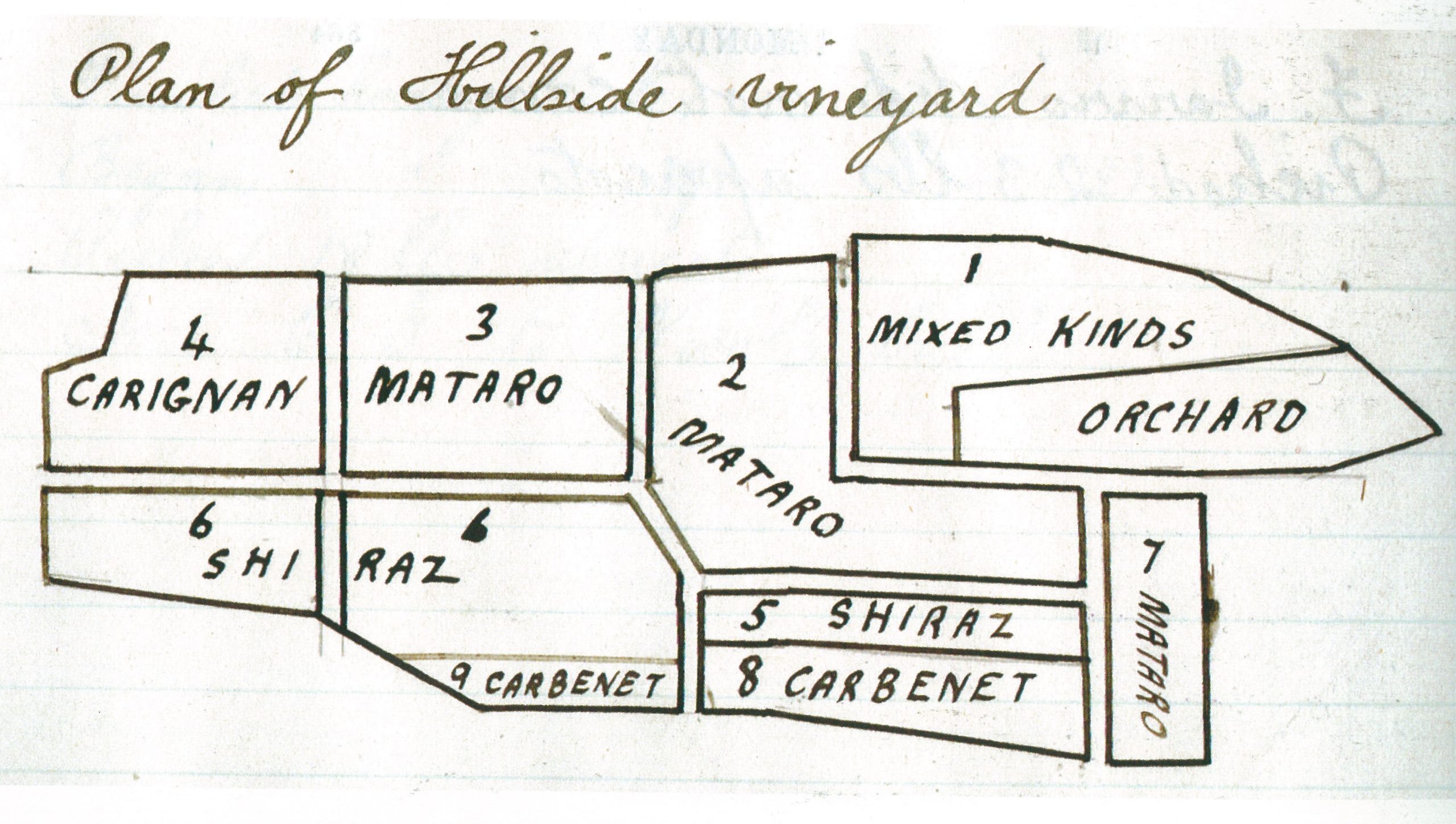
The Kay Brothers Amery vineyard began as a 339 acre property, that brothers Herbert and Frederick Kay planted to Shiraz, Riesling, Cabernet, Frontignac, Mataro, Carignan and Currants in 1891. The brothers bought these vines from some of the enduring families in McLaren Vale, including the Hardy family of Hardys’ Wines, and the Oliver family of Olivers’ Taranga.
And whilst ‘Fred’ and ‘Bert’ Kay established the vineyard over 130 years ago, the virtues of this unique piece of land began long before those early days. McLaren Vale is known for its complex geology, and the Amery vineyard is no exception, with ancient soils comprising five different geological types, ranging from 10,000 to 550 million years old. This complex soil structure means the vines struggle to thrive and survive. This struggle drives the development of powerful, concentrated flavours and fine, textured tannins, the hallmarks of Kay Brothers wines.
The Amery vineyard today is made up of 7 main varieties, including Shiraz, Grenache, Cabernet Sauvignon, Mataro, Merlot, Nero d’Avola and Muscat Blanc, alongside a handful of curio vines.
The hero variety of McLaren Vale, Shiraz, is by far the dominant planting, accounting for around 70% of our production, and just over 15ha. The Shiraz vines that supply our Basket Pressed Shiraz have a predominately eastern exposure. Soil varies from sandy loam at the top of the hill to heavier loam and clay as it descends down the hill towards the creek. The dry climate forces the vine roots, ranging from 15–25 years of age, to delve into the complex underlying Geology consisting of quartz and ironstone gravels, weathered and calcareous sandstone, siltstone and limestone.
The Shiraz that goes into our premium Hillside Shiraz allows Kay Brothers to pick various parcels of fruit so as to assemble the best blend possible. Block 11, located at the top of the hill, has shallow sandy loam soil over limestone and sandstone. These vines are very exposed to the wind and sun. As a consequence, the vines mature earlier in most years and tend to be low yielding, with intense fruit concentration and powerful tannins. The rest of the Hillside Shiraz is located farther down the hill, in New Block 6, where dark chocolate loam and clay soil dispersed with quartz and ironstone over silty limestone dominate. The New Block 6 component provides the finesse and elegance to the overall blend with savoury flavours and tight structure. The blend of these two vineyards balances each other extremely well.
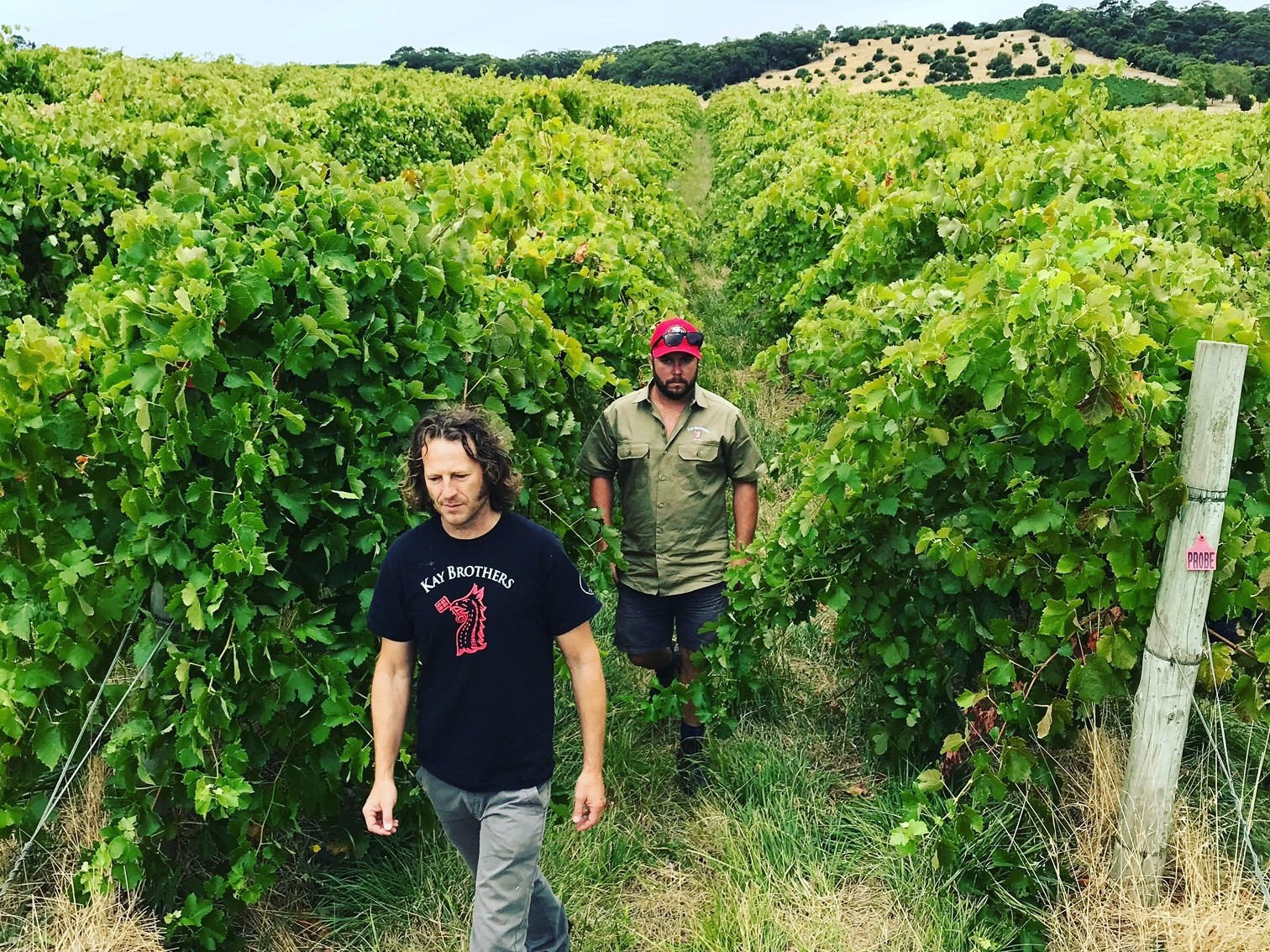
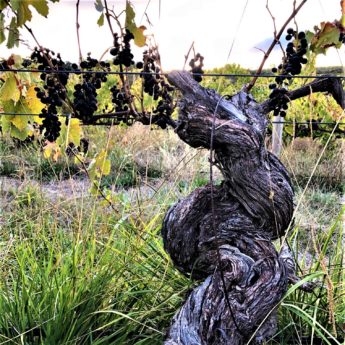
And our hero Shiraz vineyard, Block 6, planted in 1892, is our pride and joy, a direct connection to the brothers who so laboriously brought about our winery and wines. With that pride comes plenty of intricate planning to care for vines of such venerable age.
Duncan and our vineyard team practice a technique called layering, something many wineries with similarly ancient vines employ. Where there is an individual vine death, we take a water shoot from the trunk of the neighbouring vine and after 2 years bury this cane, consequently training it up onto the trellis. The replacement vine is an extension from the trunk of the “mother vine” next to it, and the cane linking the two vines is referred to as the “umbilical cord”. We never cut the umbilical cord, which will eventually rot out after many decades.
Maintenance of this special vineyard includes careful hand pruning in the winter. It takes at least 5 years to learn how to prune the gnarly old vines. Because they are so old, each vine has a unique growth habit, and is pruned individually to suit its vigour potential. This ensures each vine will maintain balanced growth during the season and ultimately produce fruit that will be crafted into wine of the quality we are proud to produce under the Block 6 label. To capture the concentrated intensity of these ancient vines, our team also practice shoot thinning. When shoots are approximately 10-15 cm long our team manually remove excess shoots where there may be more than one growing from a bud. This ensures the eventual fruit of each vine is not diluted into many shoots, but concentrated in the selected few. Finally, to cater to the fragile vines, our Block 6 vineyard is hand-picked, ensuring no vine is damaged and all the fruit is kept in the best condition possible.
The next largest planting is Grenache, that we use across four of our wines, including the Rosé, Basket Pressed Grenache, our Griffon’s Key premium Grenache, and our Founders’ Old Tawny fortified. Fast becoming one of McLaren Vale’s signature varieties, Grenache is a wonderfully flexible bright variety that can offer so much. The Grenache vineyard has a North-Eastern exposure. Soils are shallow, red sandy loam over complex geology comprising quartz and ironstone gravels, weathered and calcareous sandstone, siltstone, and limestone.
To continue the tradition of Cabernet Sauvignon at Kay Brothers, the vineyard that supplies our ‘Cuthbert’ Cabernet, was planted in 1994. Named for second generation family member and legendary winemaker Cuthbert ‘Cud’ Kay, our Cabernet is a bold, complex style of wine, true to McLaren Vale. Situated on the eastern side of the creek, below the Hillside vineyard, the rows run north-south. Soils include some heavy clay loams at the north end, running down to lighter red loams at the south and, on the western side, adjacent to the creek line, grey sand over clay.
Merlot is one of our small batch wines available only at Cellar Door. Planted in very small quantity at Amery, with only 1.3ha this traditional French variety has found a home nestled on the ‘right bank’ of the creek, opposite the century old Block 6 vines, and next to the Cabernet. Soils are a mixture of rich alluvial clay loam and lighter sandy loam with underlying geology consisting of calcareous sandstone and limestone.
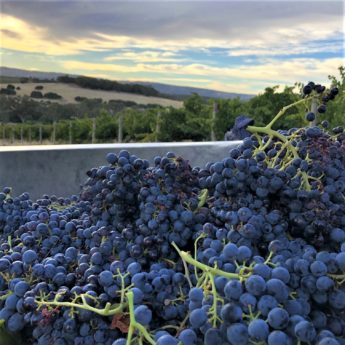
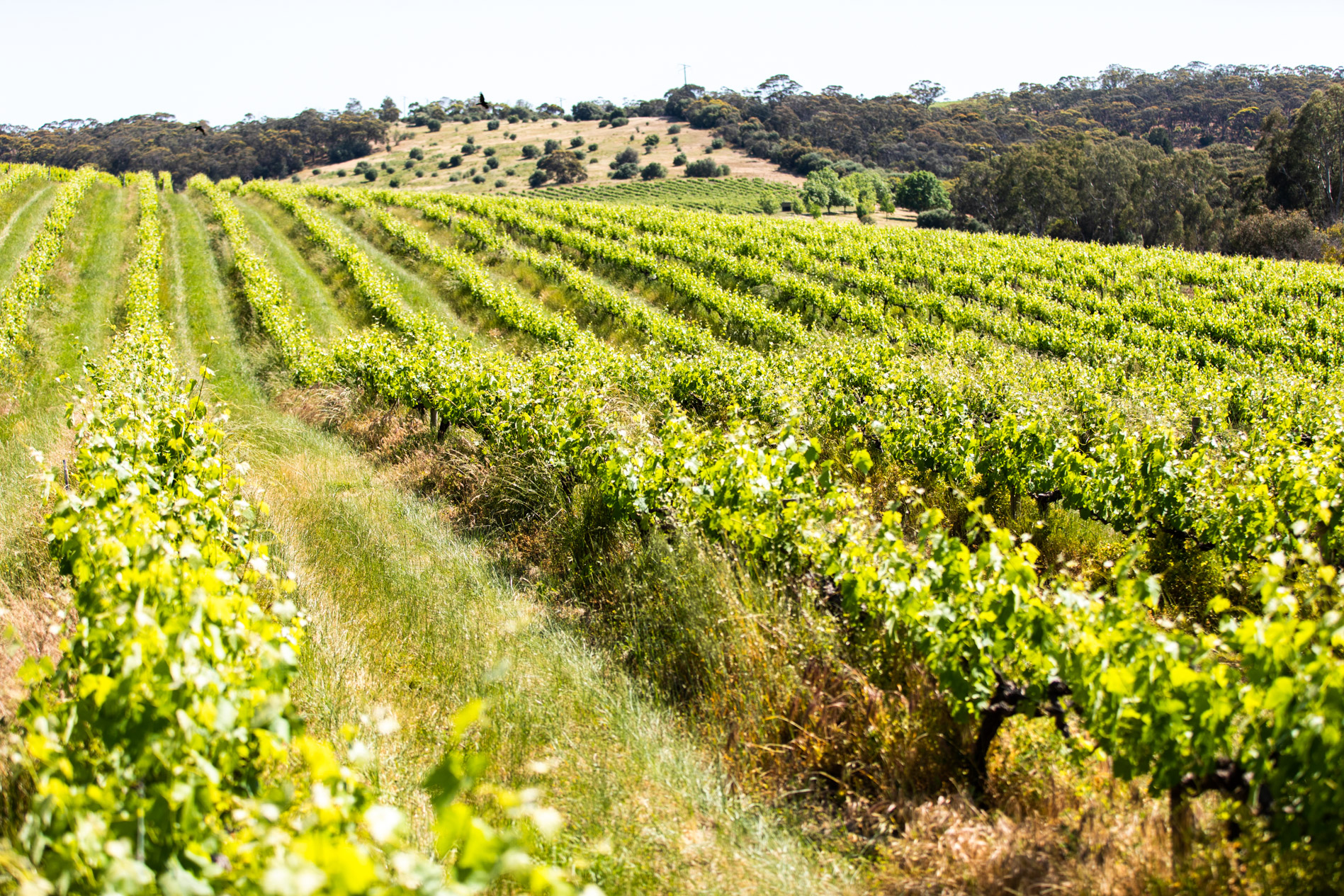
Having been grown at Kay Brothers since our inaugural vintage, Mataro, a traditional southern Rhône variety is right at home here in McLaren Vale. Known for its ripe fruit and savoury, earthy under currents, it provides a generous, robust mouth feel and loose knit tannin structure. Sourced from a single vineyard of less than a hectare of dry grown vines planted in 1993, nestled close to the creek, it sits on alluvial, chocolate, loamy soil over complex geology containing quartz, ironstone and calcareous siltstone.
And finally, our newest varietal addition, Nero d’Avola. At only four rows of this Mediterranean variety, this is truly small batch winemaking. Planted in 2010, the Nero d’Avola vines are nestled between the creek and Block 6, where the soil consists of alluvial red/brown loamy clay above layers of gravel made up of ironstone and quartz pebbles. An Italian variety native to Sicily, it is well suited to the warm Mediterranean climate we enjoy in McLaren Vale, producing wines that are generous, fruit driven and medium to full bodied in weight. The decision to plant this variety at Amery was made after Colin Kay enjoyed a bottle with dinner in New York several years ago. He knew immediately that the variety would perform well at Amery.
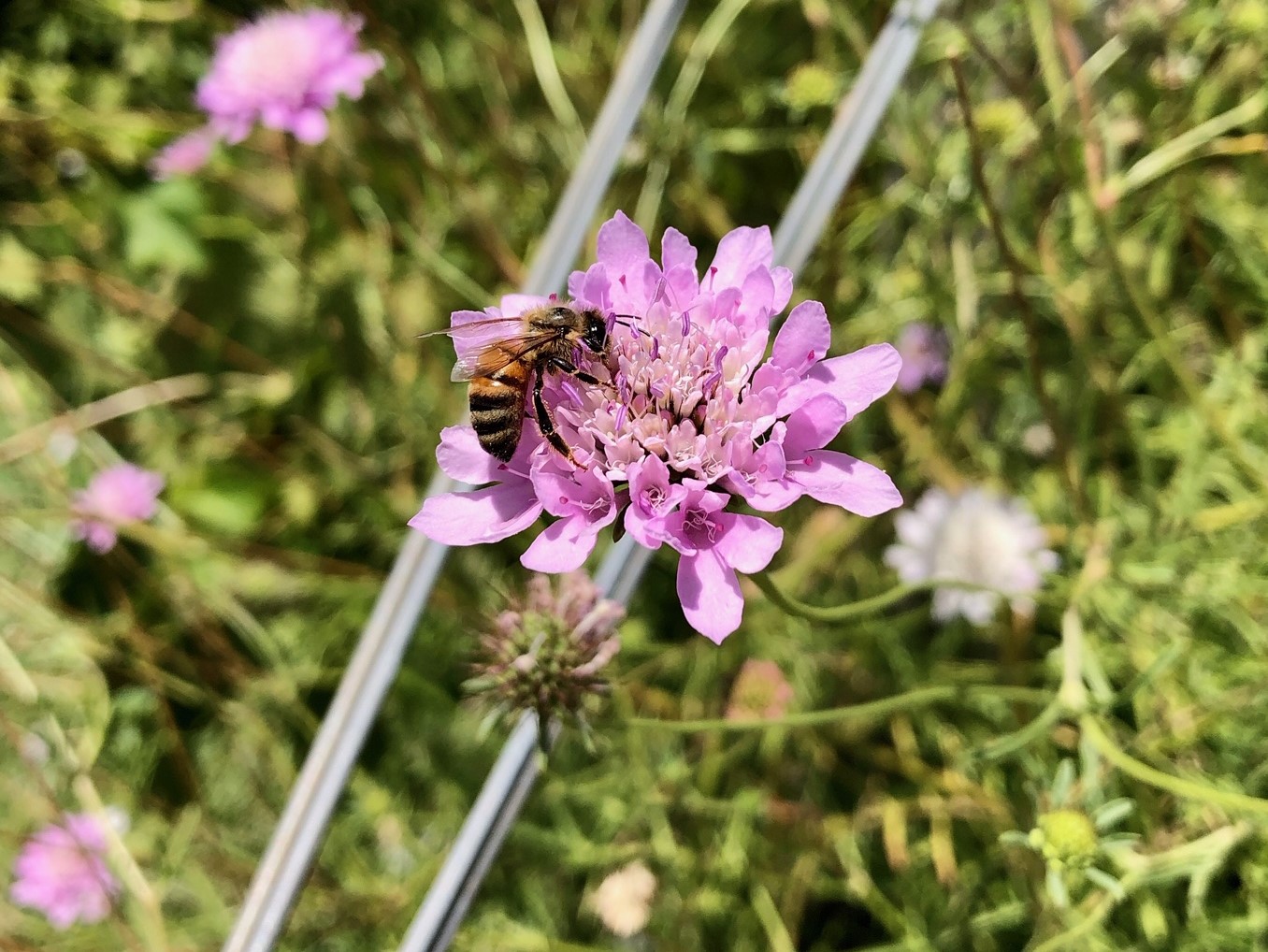
At Kay Brothers, there is one thing we probably don’t talk about enough, and that is our sustainable focus, and the hard work we do to maintain the unique and delicate ecosystem that is the entire Amery property, and the reason we are now certified under the Sustainable Winegrowing Australia program.
We consider ourselves custodians, who must nurture and care for this special site for future generations to come. To do this, we use biological and regenerative farming principles which aim to improve the fertility and biodiversity of our landscape and create a truly sustainable system.
Every decision we make in the vineyard impacts our entire ecosystem. We start from the ground up to create healthy soils as a foundation to build biodiversity as well as resilient plants that can sustain extreme weather events and any disease pressures that may arise from time to time. There have been no insecticides used at Kay Brothers since the 1970s, and we have replaced herbicide and synthetic fertiliser use with more natural applications of mulch, compost and animal manure.
This has encouraged an increase in organic matter and carbon fixing in our soils and the beneficial organisms above and below the ground are thriving. We remove excess vine shoots early in the season to open up the canopy and increase natural airflow which reduces fungal disease pressure so that we are less reliant on fungicide sprays.
Recently we have introduced sheep to graze the vineyard floor during the winter months when the vines are dormant. This natural grazing system promotes more even plant growth and biodiversity on the vineyard floor and the manure, urine and saliva acts as a catalyst for soil organisms and increases the fertility of the soil and the entire ecosystem.
Vineyards may not appear as neat and tidy as they were in the past, and this is because we encourage biodiversity of plant growth amongst the vines. We do not want monocultures, where only a single crop such as the vines themselves are preserved and all other plants are considered competition.
Instead, we use these plants as a tool to shade the soil and retain moisture during the warm summer months. They provide a food source for earthworms, soil fungi and bacteria below ground as well as beneficial insects, bees, predatory wasps and mites above the ground. Insectivorous bird life, birds that don’t consume grapes, are also more active as their food source has increased.
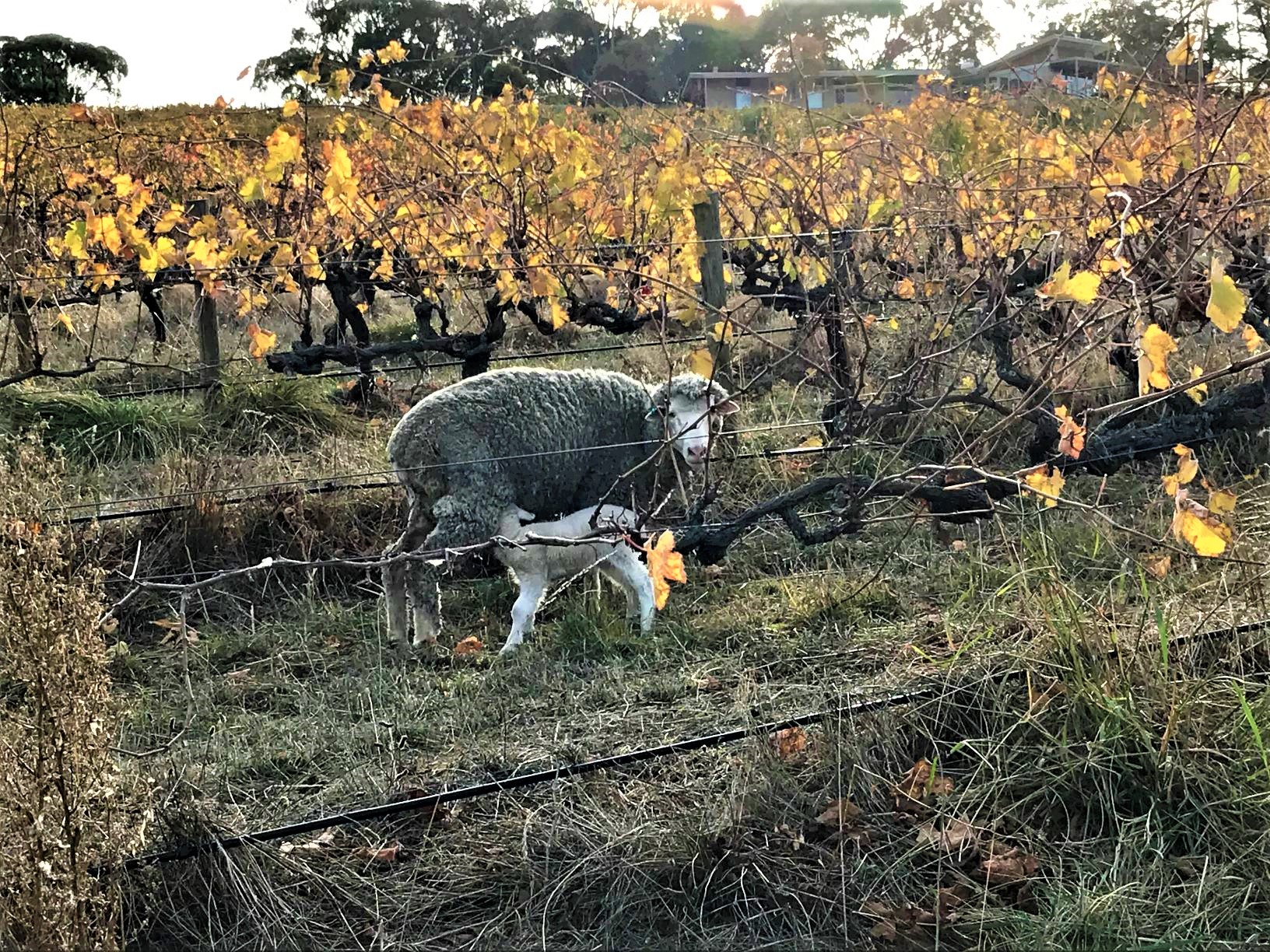
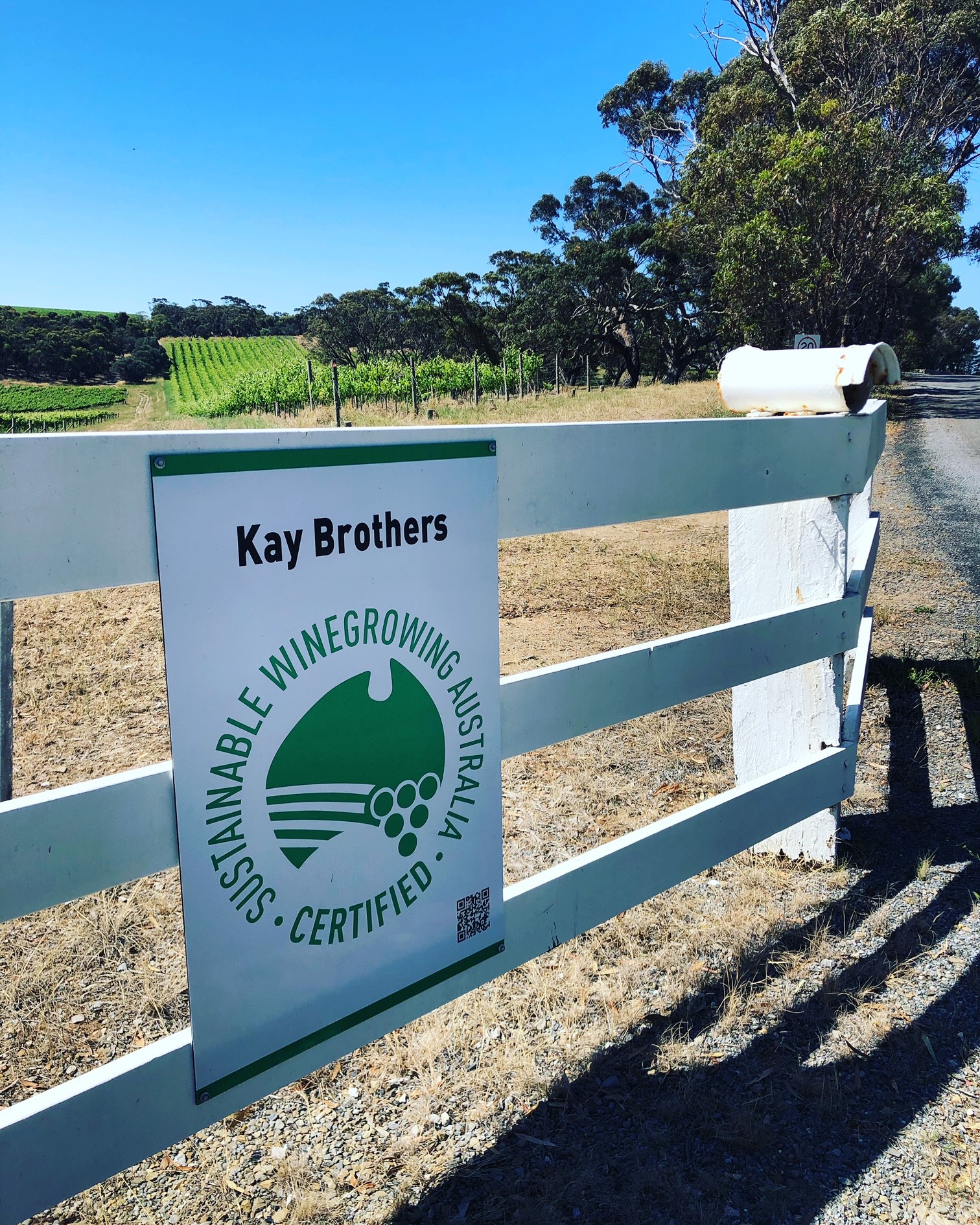
SUSTAINABLE WINEGROWING AUSTRALIA
Growing and making wine sustainably is a holistic approach to production that evolves the environmental aspect of the craft. It looks at how we can better use energy and water to create efficiency, support regions and communities, and establish a business that is resilient and thriving.
Where organic and biodynamic practices look specifically at environmental management, sustainable winegrowing takes a broader view to improve social and economic performance. Fortunately, many growers and makers in Australia are practicing sustainably already, it’s just getting into the habit of documenting everything to make it official.
As part of the Sustainable Winegrowing Australia program, information collected allows a greater understanding of what’s happening in the vineyard or winery. It allows our community to know where they are and have a view to where they want their practice to be. So, they can be proactive, rather than reactive. (credit SWA)
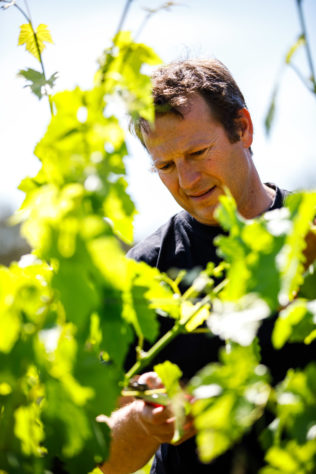
DUNCAN KENNEDY - WINEMAKER
Our winemaker Duncan began in the vineyards of Padthaway, before deciding to study viticulture at university. Working in Padthaway and Langhorne Creek as a viticulturist gave Duncan a thorough appreciation of holistic vineyard management.
After several years working in the vineyard, Duncan decided to explore international wine regions, completing vintages in Okanagan Valley in Canada, Bordeaux in France and Russian River Valley in the US, helping to convince him to transfer his skills to winemaking.
When he returned to Australia he completed his post graduate studies in oenology before finding work in McLaren Vale as a cellar hand at Pirramimma, then as Assistant Winemaker at Shottesbrooke Vineyards.
In 2015, Duncan joined Kay Brothers as Chief Winemaker & Viticulturist, and it wasn’t long before his influence was felt, being crowned Bushing King in 2017, as the maker of the “Best Wine of Show” for the 2016 Kay Brothers Griffon’s Key Grenache and also the “Best Single Vineyard Viticulturist”.
Duncan is also supported by a small, dedicated team of cellar hands and vineyard workers, many of whom have been at Kay Brothers for years. A great team that work hard to make Kay Brothers the wines they are today.
COLIN KAY – THIRD GENERATION
Born in the homestead in 1940, Colin grew up on the Amery property. Choosing to follow in his family footsteps by also becoming a winemaker, completing his Diploma in Oenology in 1963 Dux of his year.
Broadening his perspective, Colin worked in the Barossa for three years, then travelled extensively, visiting wine regions in California, South America and Europe. On is return journey aboard the Achille Lauro, Colin met Ruth and they married in 1971. They had two daughters, Helen and Elspeth, initially living in a cottage they built near the winery. After 4 years, the family moved into the Amery Homestead where they lived for another 30 years. The cottage was operated as a B&B from 2000 for 10 years, attracting many new visitors to Amery.
In 1970 Colin returned to the Amery property to become the third generation winemaker of the Kay family. Maintaining a family tradition of self-sufficiency, Colin planted an extensive orchard that Ruth used to create james and preserves marketed under the ‘Winemaker’s Kitchen’ label.
Colin was winemaker and managing director until 2010 when he officially retired, though he still visits the winery most days.
Amongst the considerable replanting that Colin undertook during his time, was a small block of Nero d’Avola which was a variety that had always intrigued him. Colin was also amongst the first to use Stelvin closures on premium wines, notably the Block 6.
Colin’s winemaking philosophy is that wine should reflect the place where the grapes are grown.
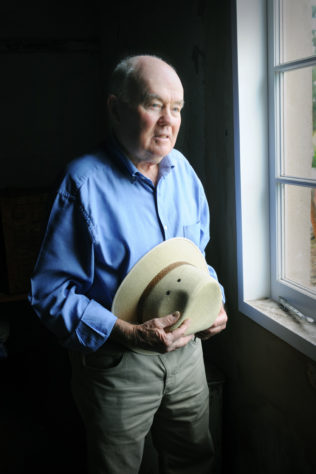
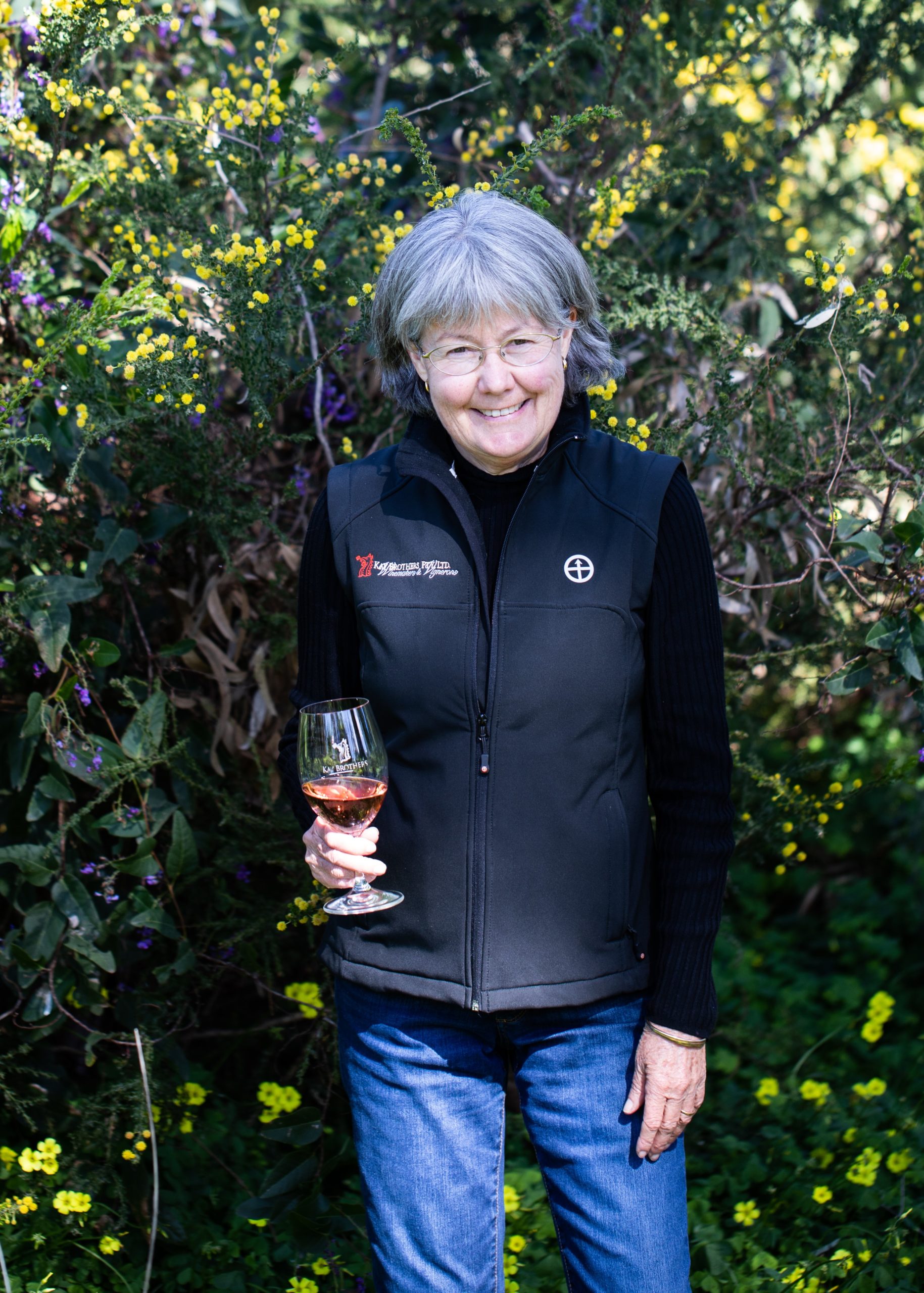
ALICE KAY - THIRD GENERATION
Alongside her older brother Colin, Alice loved growing up at Amery. Often helping in the vineyard and winery as she grew up. It was also the perfect place to explore on horseback as she developed her lifelong passion for nature.
As a third-generation shareholder, Alice held a position on the Kay Brothers board since the early 1990s until 2023. Alice and husband Mike lived on the property in the historic Kay family homestead and worked as a part-time conservation ecologist and interpretive consultant for the company. She and biologist husband Mike undertook an olive removal and tree planting program to restore native plant diversity in the Amery creek line from 2011 until 2021.
In 2015, she wrote the book Kay Brothers The First 125 Years with co-authors brother and winemaker Colin Kay and James Dunsmore. Using her training in the visual arts, Alice also planned and curated three major displays for Kay Brothers cellar door, as well as two solo art exhibitions.